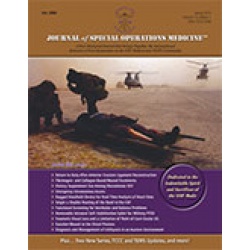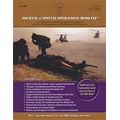Single versus Double Routing of the Band in the Combat Application Tourniquet
Clumpner BR, Polston RW, Kragh JF, Westmoreland T, Harcke HT, Jones JA, Dubick MA, Baer DG, Blackbourne LH 13(1). 34 - 41 (Journal Article)
Background: Common first aid tourniquets, like the Combat Application Tourniquet (CAT) of a windlass and band design, can have the band routed through the buckle in three different ways, and recent evidence indicates users may be confused with complex doctrine. Objective: The purpose of the present study is to measure the differential performance of the three possible routings in order to better understand good tourniquet practice. Methods: A training manikin was used by two investigators to measure tourniquet effectiveness, time to stop bleeding, and blood loss. Results: The effectiveness rate was 99.6% (239/240) overall. Results were similar for both single-slit routings (inside vs. outside, p > 0.05). Effectiveness rates (yes-no results for hemorrhage control expressed as a proportion of iterations) were not statistically different between single and double routing. However, the time to stop bleeding and blood loss were statistically different (ρ < 0.05). Conclusions: CAT band routing, through the buckle either singly or doubly, affects two key performance criteria: time to stop bleeding and volume of blood lost. Single routing proved to be faster, thereby saving more blood. Learning curves required to optimize user performance varied over 30-fold depending on which variable was selected (e.g., effectiveness vs. blood loss).


 Español
Español 




